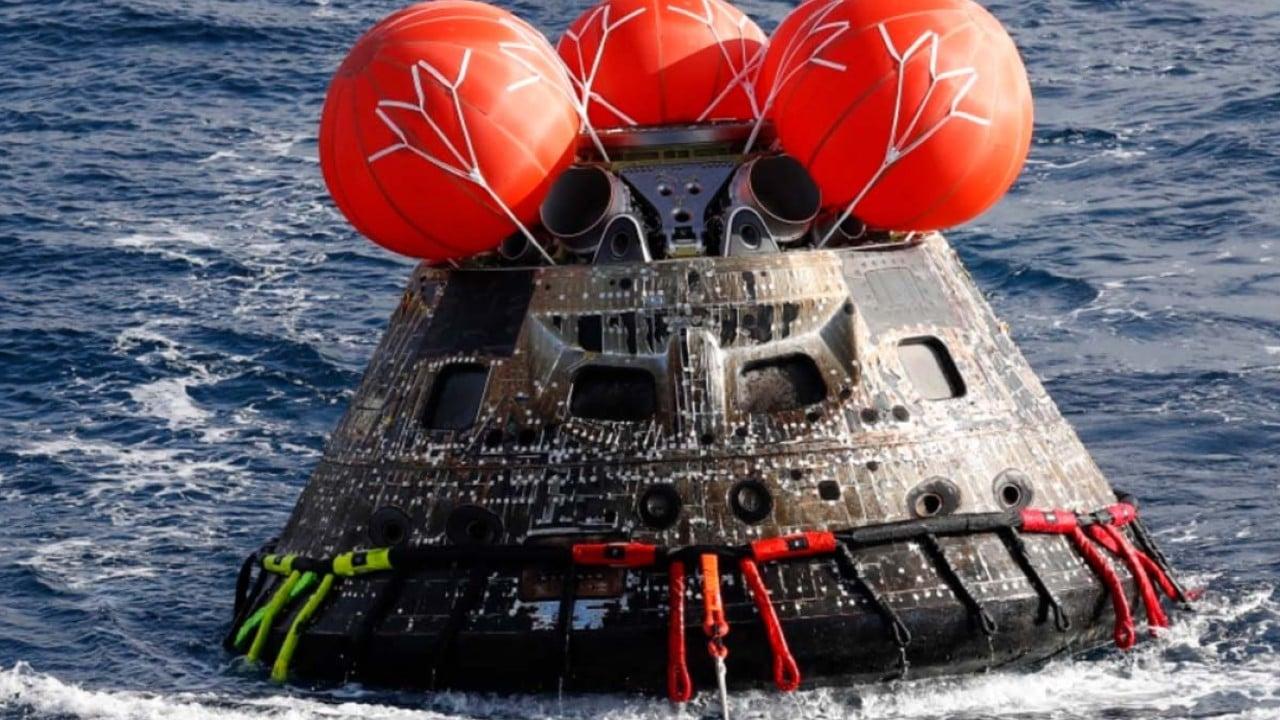
In Chinese mythology, Yutu is the pet jade rabbit of the moon goddess Chang’e.
The vehicle is about 865 metres (2,837 feet) northwest of the original landing site, according to a new route map released by the space agency.
On January 18, the rover’s panoramic camera, which can take 3D images using binocular stereovision, captured a 360-degree view that showed Yutu 2’s wheel tracks, some nearby rocks, and a small impact crater.
Images taken by Yutu 2’s panoramic camera show rover tracks, rocks, and craters. Photo: CNSA
As the longest-lasting of all moon rovers, Yutu 2 has travelled a total of 1,455 metres across a crater called Von Kármán, gathering information about its surface, subsurface and the area’s solar winds, among other tasks.
Yutu 2 is powered by solar panels and has a radioisotope heater unit to ensure its subsystems can operate during the long lunar nights.
The rover is equipped to study the mineral composition of the lunar surface, and has ground-penetrating radar capable of probing up to 100 metres below the surface.
A Swedish-developed instrument on board allows Yutu 2 to observe how solar winds interact with the lunar surface, and could help scientists understand the source of the moon’s water.
About a year ago, the rover created a buzz when it spotted what was reported to be a “mystery hut” near the rim of a smaller crater within Von Kármán – it turned out to be a rabbit-shaped rock.
Yutu 2, which has returned more than 940 gigabytes of scientific data to Earth so far, will have company soon, according to the state broadcaster CCTV.
Yutu 2, China’s lunar rover, has been exploring a massive crater on the moon’s far side since 2019. Photo: Xinhua
The Chang’e 7 mission is expected to launch in 2026, with a payload that will include a rover larger than Yutu 2. The mission, which will also travel to the moon’s far side, was designed to look for water ice near the south pole, the mission’s deputy chief designer Tang Yuhua told CCTV on Sunday.
“Compared with Yutu 2, which relies more on operational commands from Earth, the Chang’e 7 rover will be more intelligent, choosing its exploration path mainly on its own,” Tang said.
She added the rover would also be part of early preparations to establish a research base at the lunar south pole.
Chang’e 7 will also have another passenger – a lunar rover from Dubai called Rashid 2, which will also explore the same region, under a cooperation agreement signed by CNSA and the United Arab Emirates’ space agency in September.



